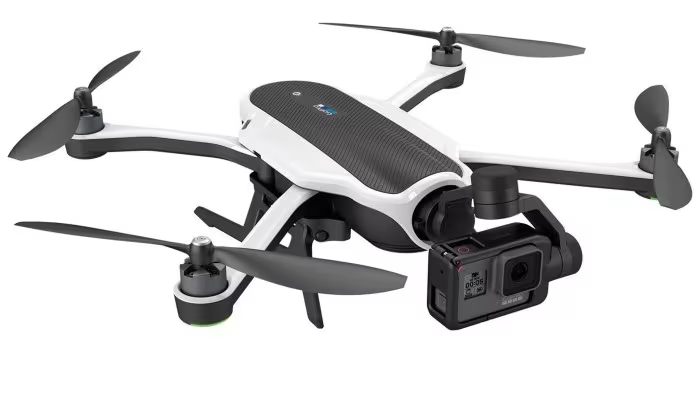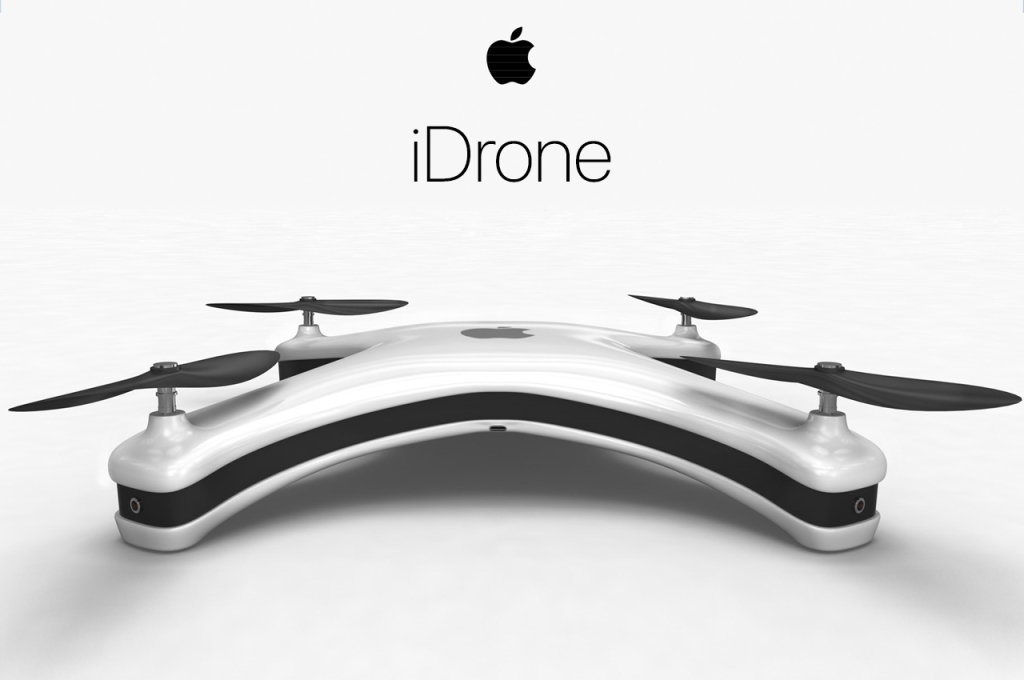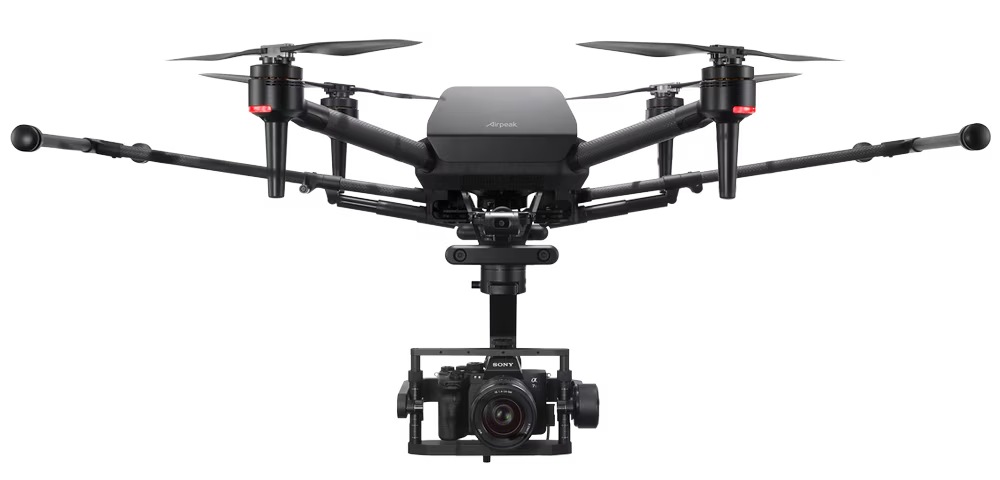I know, I know…you don’t want to hear it and it’s dogwater that DJI is likely going to be banned for use in the United States for the foreseeable future. Believe me, nobody understands more than me — it sucks that we have gotten to this point. Also, before I cut to the chase, know that this is not a feeble attempt at telling you “to find another drone that is American made,” for two reasons:
- Everything you are about to read is hypothetical in nature.
- That response sucks every time somebody close to you utters it from their dirty little mouth.
However, after some reflection on the situation we are faced with regarding the banishment of DJI and potentially Autel Robotics as well as several OEM parts manufacturers based out of China, I do think there is a prime opportunity for at least four companies to fill the void in the consumer/prosumer space DJI would be leaving behind in the United States. Who are they and what stipulations/scenarios must play out for them to slide into this role for the US drone market? Let’s talk about it, Let’s Talk Drones (hehe, I had to do it)!
GoPro: An Opportunity for Redemption…

Most of us remember or were exposed to the GoPro Karma at some point down the line. If not, count yourself lucky. While the Karma was not the worst drone in the world, it fell woefully short of expectations and there were many reports of critical bugs that rendered the drone unreliable if not completely useless for some users. The main three issues were an inability to pair the controller to the drone, unreliable connectivity between the camera and the drone/controller feed, faulty gimbals, and intermittent flyaway issues.
That said, the void that DJI will leave if removed from the hands of consumers and prosumers alike is a potential opportunity for GoPro to redeem itself and manufacture a high-quality camera drone. Let’s look at a few reasons why:
- They already have at least some experience producing UAV platforms.
- Sure, it didn’t go well, but let’s face it…they already have a foundation laid somewhere in their headquarters that they can build upon. With mainstay competition out of the picture, the world is GoPro’s oyster! They can take their time and address the issues with the Karma at their own pace (within reason).
- Sure, it didn’t go well, but let’s face it…they already have a foundation laid somewhere in their headquarters that they can build upon. With mainstay competition out of the picture, the world is GoPro’s oyster! They can take their time and address the issues with the Karma at their own pace (within reason).
- They have fantastic small-format (action) cameras that will give them a great starting position for camera quality.
- GoPro has, arguably, the best action camera technology on the market. Their color science is amazing, the user interface within their ecosystem is stellar, and the hardware they have developed is cutting-edge for a camera format this small.
- GoPro has, arguably, the best action camera technology on the market. Their color science is amazing, the user interface within their ecosystem is stellar, and the hardware they have developed is cutting-edge for a camera format this small.
- They are the only American drone manufacturer in history that has been able to strike the balance between affordability and availability while providing at least some value in the efficacy column.
- The original Karma drone retailed for $800 without an included GoPro camera and offered a bundle for $1,100 with the GoPro Hero 5 action camera. That pricing is competitive with DJI and is affordable to most people who would consider purchasing a UAV in the first place.
Will GoPro actually throw their hat back in the ring though? It’s hard to say. While technological inconsistencies and issues are the main reason GoPro stepped away from the UAV market, it can be argued that these issues were magnified by the increasing pressure DJI was putting on them with the streamlining and efficacy of their drones.
As stated earlier, now that DJI is likely being removed from the US market completely, will it give GoPro the breathing room it needs to take another stab at drones? Time will tell, but if I were the GoPro main decision-maker, I’d jump on this opportunity quick. While their action cameras are arguably the best on the market, competitors like DJI and Insta360 have been quickly catching up to them in their ability to manufacture reliable small-format cameras.
GoPro cannot continue to stagnate with just the Hero series while competitors are closing the gap — they must offer more versatility in their company and the products they offer and going back to drones might just be what they need to jumpstart things again.
Tesla: A Long Shot Savior

As we are looking at a complete momentum shift in the world of drones, especially on the consumer/prosumer side of the market, the name “Tesla” keeps getting thrown into conversation. I’ll admit, I myself find it very forced and cringey when I hear Tesla come up as a solution to the problem in front of the drone industry…but it is an interesting idea nonetheless.
While it has seemed like Tesla’s success has happened overnight, the company has been manufacturing and delivering electric cars since 2009. Still, the scale-up in popularity, manufacturing, and sales of Tesla cars has occurred largely over the last 6 years or so. It used to be a fun conversational topic, rooted in hypotheticals and aspirational thinking…now you can’t drive more than a city block without seeing a Tesla on the road — fully operational.
This type of ingenuity, innovational thinking, and execution is why so many are hoping Tesla will begin developing UAV solutions. Consider the fact that they have nearly mastered autonomous driving for automobiles…now apply that to drones. Think about the thought that was put into the included conveniences and technology you find in a Tesla…now apply that to drones. All Tesla needs to do is either develop camera technology on their own (if they haven’t already) or partner with a company like Canon to develop small-format cameras that can be built into an sUAS.
I think it is highly unlikely that Tesla breaks into the UAV world and even less likely that they would choose to develop a consumer/prosumer drone out of gate, but I suppose it’s not impossible by any measure. Elon? ♫♪ Elon can you hear me… ♫♪
Apple: Catering to Creatives Since 1998

The section title is misleading — Apple has been around longer than 1998, but that is right around the time that their products began seeing an evolution towards creative users and the needs of those in multimedia. That shift, paired with all of the products Apple has produced between 1998 and now, is the exact reason that Apple is poised to throw its hat into the drone circle. Not convinced enough on that alone? I understand, it’s a very small motivator for a company like Apple to start doing something way outside their lane…but consider this:
- Apple and DJI go together like peanut butter and jelly. In fact, DJI recommends Apple products used alongside their drones for the “best user experience.” The DJI Fly app is optimized for Apple devices and frankly…DJI’s CEO has a bit of a reputation for being an Apple fanboy. All of that in-mind, Apple must recognize that a major supporter of their peripheral devices and a company that plays nice on their App Store is about to become much less active in their core market…Apple may not need DJI, but their absence is certainly going to leave a void that Apple might be interested in filling.
- Think about how crisp and beautiful the pictures from an iPhone are. Now consider that over the last 10 years apple has been able to increase their cameras’ sensor sizes, integrate multiple lenses for a variety of focal lengths while shooting, integrated true slow-motion video, and most recently including the ability to shoot RAW photography and LOG videography with their phones. Why is this important? Apple already has a decade of developing small-format camera technology…which would translate beautifully to the drone space for consumer/prosumer drones.
- Finally, perhaps the most convincing information as to why Apple is perfectly positioned to fill the void that will likely be left by DJI: they’ve already filed for a patent on a drone. Yes, believe it or not in 2020, Apple filed a patent in 2020 (US Patent # 11929802) for an “unmanned aerial vehicle communication.” While it is not yet certain what this patent will entail or if it is for an entire UAV system, the fact is Apple has already dipped their toe in the water — and that is promising.
Of all of the companies on this short list poised to step into the consumer/prosumer drone space, I think Apple is the second most-likely to do it. They have the trust of American consumers; the manufacturing processes in place for “America-safe” technology; and they have extensive experience with small-format camera technology that would mesh perfectly with a drone. All of the signs are there and now we must wait to see if they come together to create an “iDrone.”
Sony: Expanding Their Reach Into UAVs

Before you even start, I am well aware of the fact Sony already has a drone. The Sony Airpeak S1, while affordable compared to other UAV platforms in its category, is still well-outside of the budget of most consumer/prosumer users. Thems the facts! Now that DJI looks like they are on the way out of the American drone market though, this could be Sony’s opportunity to step-in and create drones that counter the Air, Mavic, and Mini series from DJI without any type of pushback from competitors or the market.
Think about it…if DJI is out of the picture, Sony can more easily redefine what the “standard” is in the American market. Also, Sony has not behaved illicitly in any of the DJI banishment proceedings, no lobbying from what anyone can tell and they have largely just focused on their own products and the refinement of them (that’s how you should do business), so there is no animosity held by the consumer/prosumer drone market towards Sony. They are, quite literally, the best and most qualified company to step into this role and fill it for the betterment of the drone market.
Imagine this…a drone that mirrors the Mavic 3 in every way…but with the Sony Alpha A6700’s larger APS-C sensor — capable of shooting 4K video at 120fps and 26MP photos…oh, and no geofencing. That would be a legitimate gamechanger in the drone world and would certainly not only address the potential void left by DJI, but overflow it with capabilities only a true camera company could achieve.
Right now is the moment for Sony to step-up and rise to the occasion. There is an entire market waiting for somebody to save the day should these DJI bans go through as proposed. Having a company like Sony, who has been vetted and achieved a level of trust with the United States to responsibly serve many of its technological wants and needs, is crucial right now and will set up the consumer/prosumer drone industry for the foreseeable future.
—
If you enjoyed this article and the content I create, please consider supporting me by clicking the button below! Every little bit helps me to grow The Drone Geek and create engaging and informative content for you to enjoy.
The option to contribute is totally voluntary and I will NEVER block out anyone who views my content with a paywall. If you cannot contribute monetarily, you can support me in other ways! Please share this article as well as any of my other content pieces on my social media platforms. Consider subscribing to my blog and YouTube channel as well as following me and liking me on Instagram, Twitter, and Facebook.




